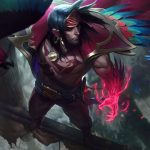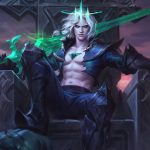Are you new to League of Legends and don’t know where to start? Look no further!
This article will provide a comprehensive glossary of terms, definitions, and acronyms commonly used in the game.
We’ll cover everything from basic terminology to champion attributes, game modes, items and currencies, map types, and team strategies.
So dive in and let’s get started on your journey to becoming an expert League of Legends player!
Key Takeaways
- Champions are player-controlled characters with special abilities.
- Minions are computer-controlled creatures that fight for both teams.
- Towers are structures that must be destroyed to win the game.
- Player psychology plays a role in strategy and champion balancing.
Basic Terminology
You need to familiarize yourself with basic terminology if you want to understand League of Legends. The main components of the game are champions, minions, and towers.
Champions are player-controlled characters who fight against each other and use special abilities.
Minions are computer-controlled creatures that fight for both teams, while towers are structures which must be destroyed by either team in order to win the game.
Player psychology plays a big role in the strategy used to achieve victory and champion balancing is key when selecting a team composition.
Lane control is another important factor; players must strategically choose where their champions will go on the map in order to gain an advantage over their opponents.
Lastly, objectives such as dragon and Baron Nashor also provide powerful bonuses when taken or destroyed.
Champion Attributes
| Knowing your champion’s attributes can help you get the most out of them during a match. Each champion has their own set of stats and abilities, which make them powerful in different ways. All champions have four main attributes: Attack Damage (AD), Ability Power (AP), Health Points (HP) and Mana Points (MP). | Powerful Synergies | Role Diversity |
|---|---|---|
| Attack Damage | Crowd Control | Tank |
| Ability Power | Utility | Support |
| Health Points | Mobility | Jungler |
| Mana Points | Sustainability | Assassin |
These can be used to create powerful synergies between allies, enhance a champion’s role diversity, or provide unique benefits that suit their chosen playstyle. Understanding these attributes will give you an advantage in battle.
Game Modes
Playing League of Legends involves competing in a variety of game modes, each with different rules and objectives.
The most common game mode is Summoner’s Rift, where two teams battle for control of the map.
Teams are composed of five players who occupy specific roles such as marksman, support, or tank to help their team win.
Map Types
Different game modes in League of Legends are played on different maps, so it’s important to understand the various map types.
The 5v5 Summoner’s Rift is the most popular map type. It consists of a river with two main paths, three lanes, a jungle full of monsters, and towers that must be destroyed. Each team also has two summoner spells they can use for special abilities.
ARAM (All Random All Mid) is another popular map type. In this mode, players have randomly selected champions and fight on one lane. There are rotating objectives such as Dragon or Baron Nashor spawning periodically.
Twisted Treeline is a 3v3 map with two lanes and additional neutral buffs to help teams gain an advantage.
Finally, Howling Abyss is a 5v5 single-lane map. In this mode, teams focus on obtaining powerful minions instead of turrets and dragons like other maps.
With an understanding of these different map types, you’ll be ready to take your game to the next level!
Team Roles
Moving around the different map types in League of Legends requires teams to assign roles to their players. The most successful teams have role flexibility and use role optimization strategies that will maximize their chances of victory on any given map. Knowing your team’s roles and how they can work together is critical for success.
The five main roles are Top laner, Jungler, Mid laner, ADC (Attack Damage Carry), and Support.
The Top laner is typically in charge of setting up ganks while also pushing objectives like towers and inhibitors. Meanwhile, the Jungler has a more mobile role as they roam the map looking for opportunities to secure kills or take objectives. The Mid lane champion usually has an aggressive playstyle and focuses on taking control of enemy jungle camps or skirmishing with the opposing midlaner.
The bottom lane duo consists of an ADC, who should focus on farming minions while also dealing consistent damage during fights, and a Support player responsible for providing vision control and crowd control for their ADC during engagements.
All five players need to communicate effectively with each other in order to capitalize on opportunities quickly when they arise. With proper role optimization, teams can optimize their effectiveness across all maps!
Items and Currencies
Building a strong item set is essential to success in League of Legends. Items are the main way to increase your champion’s power, and there are many different ways to do so.
Currency sources allow you to purchase the items you need for your champions build. These sources include gold from kills and minions, blue essence from disenchanting Champion shards, and Riot Points which can be purchased with real money.
Item Builds
Creating an effective item build in League of Legends requires selecting items that best suit your champion and your team’s overall strategy. To maximize your potential, consider these BUILD paths:
-
Diversify: Create a build with items that provide multiple stats and benefits.
-
Prioritize: Choose the most essential items for your champion’s success first.
-
Adapt: Be flexible and adjust to situations as they arise by picking different item combinations.
-
Combine: Strategically combine items together to get the most out of them.
-
Balance: Make sure all stats are balanced so you don’t have any weak spots in your character’s abilities.
Currency Sources
Now that you know about the different Item Builds in League of Legends, it’s important to understand how to obtain the currency needed to purchase them.
There are two main sources for obtaining currency: Buying Currency and Crafting Currency.
By buying Currency, you can purchase Riot Points (RP), which are used to buy items directly from the store.
Alternatively, you can craft currency by playing games and acquiring Blue Essence (BE).
BE is primarily used for unlocking champions but can also be exchanged for RP or items in the store.
Map Types
You’ll need to be familiar with the different Map Types in League of Legends. There are three primary map types: Summoner’s Rift, Twisted Treeline, and Howling Abyss.
Each one offers its own unique features and strategies:
-
Summoner’s Rift is a 5v5 map that features 3 lanes, 2 jungle areas, and a river running through the center. Picking Strategies should revolve around early game objectives like dragon control or tower dives.
-
Twisted Treeline is a 3v3 map featuring just two lanes and a single jungle area in between them. Team compositions here focus on dueling power or split pushing potential. Map Objectives include controlling the two Altars found near each team’s base.
-
Howling Abyss is an ARAM (All Random All Mid) map where teams are randomly assigned champions and fight in one long lane with no jungle area or side lanes. Winning requires strong team fighting capabilities as well as focusing on taking down towers quickly before opponents can gain an upper hand.
Team Strategies
Knowing the different map types is important for developing successful team strategies in League of Legends. There are a few tactics that teams should focus on to outplay their opponents and win teamfights.
| Tactic | Description |
|---|---|
| Objective Control | Successfully securing objectives like towers, dragons, and barons to gain a strategic advantage in the game. |
| Teamfighting Tactics | Utilizing fight initiation, crowd control, damage output, and positioning to win teamfights. |
| Lane Pressure/Roaming | Creating pressure in lanes through ganking or roaming mid-lane to help teammates gain advantages over enemy champions. |
| Vision Control | Placing wards around key areas of the map to gain vision of enemy movements and objectives. |
| Warding Swaps/Trades | Trading vision with enemies by placing a ward deeper into their territory while removing a ward from yours. |





